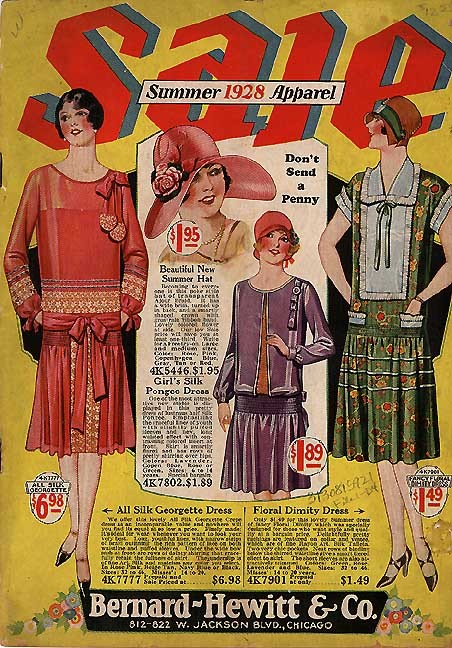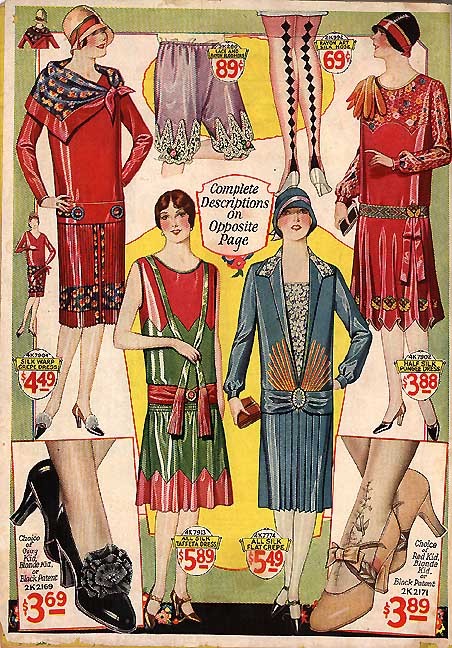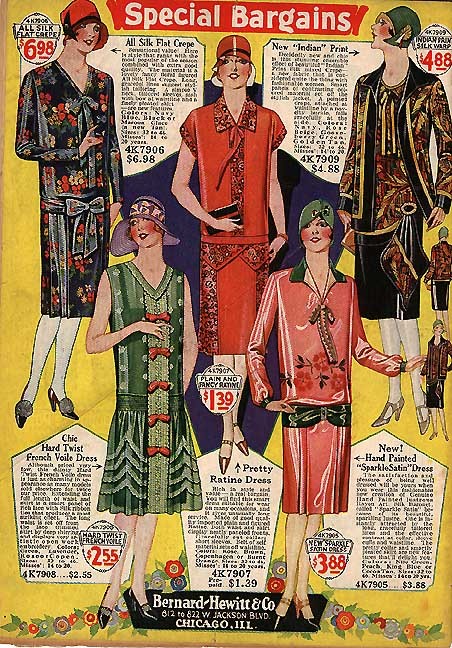These clothing ads from 1928, featured on Jezebel, portray an ideal female form that is wildly different than the one we have today. Note the straight lines (no hips or boobs) and very short hair cuts:



I also like how the first image reads “Summer 1928 Apparel.” Seasonal fashion, it appears, is nothing new.

Comments 15
KJK::Hyperion — March 18, 2009
Ah-ha, now I understand why Les Triplettes de Belleville were drawn that way
KJK::Hyperion — March 18, 2009
And don't miss the "New "Indian" Print" dress
Edwina — March 18, 2009
It also appears the faces are round, as opposed to a more squared look with prominent cheekbones that is popular today.
Penny — March 18, 2009
No tiny waists either--which meant no cinching undergarments. That was an improvement!
Titanis walleri — March 18, 2009
Drawing men with women's heads wearing women's clothing, that's an... interesting approach to say the least...
archdiva — March 18, 2009
I think it still points out that there have been "ideal female forms" for longer than we probably care to remember.
There were probably plenty of women in 1928 who bemoaned their large breasts, curvy hips and long hair (that someone said they shouldn't cut for any number of reasons) and that they would never fit the "ideal".
Actually, the Julie Andrews movie "Throughly Modern Millie" gets at this a bit, comically, when she had a difficult time keeping her breasts flattened to fit the flapper fashions of the day, the very fashions depicted above.
archdiva — March 18, 2009
And actually Penny, the cinching women had to do was around the bust, not the waist. We haven't been free to some form of undergarment for centuries...
George — March 18, 2009
If you're interpretation is correct this is very interesting. I think there could be other factors though.
Could it be that sexual attitudes were different during that era and in fact these advertisements were simply drawn to be as non-sexual as possible? In that case the advertisements indicate the evolution of norms of sexuality rather than aesthetics.
Or it could be that skinny models show off the clothes better. Even today most women who model clothing are unnaturally skinny, with a straight figure.
Other studies have indicated that cultural perceptions of beauty are relatively constant across cultures and times, with the ideal being the "hourglass" figure. That supports the sociobiological theory that our perception of beauty is an evolved indicator of reproductive potential.
This is interesting contradictory evidence, though anecdotal, if it really means what you've interpreted it to mean.
Abby — March 19, 2009
George, I don't think this is about sexual attitudes. Note the legs and the bloomer-style underwear displayed at the top of the second ad. There is lots of other evidence that cultural perceptions of feminine beauty change. We can even look over the past few decades to see how idealized women's beauty (in the US) has vacillated. For fashion models, there was the Twiggy look in the 60s, super skinny, flat chested - which returned again in the 90s with the "waif" look. Yes, models are typically very thin, but when Twiggy and, later, Kate Moss were introduced, they were seen as having radical new looks.
Jay Livingston — March 19, 2009
I thought that the flapper look was supposed to indicate liberation from the corset and bustle clothing of earlier generations and that the looseness and freedom in clothing symbolized those qualities in a more general way. Ditto for hair styles. The flapper, with her short hair, was freed of the elaborate preparation that long hair required. Frankly, I think these gals look swell, and when they dressed up in these swanky duds, well no wonder the fellas were all sweet on them.
Tyrone — May 4, 2009
Let's not forget that although flapper fashion freed women from waist cinching corsets, to meet the standards of the new "boyish" body ideal women had to resort more than ever before to self-inflicted starvation (what became known as "dieting") and exercising (which, of course, they were more able to do without the corset) to shape their bodies into the new ideal. So, in a sense, the cage that defined the shape woman's body changed from being a corset to her actual body.
Anonymous — July 28, 2009
Y'know, flapper fashion was freedom from bustles and elaborate hair, but it's still a difficult look to maintain. It definitely goes farther to show an unnatural body ideal than it does women's lib, though it was certainly a good try to break away from previous ideals.
Also, we can talk about freedom from corsets if we want, and should thanks to the genius who invented our oh-so-hated bra, but men also wore corsets during the 'waist-cinching' era of them, and corsets were generally comfortable outside of tight-lacing high society circles.
Moon_sunn — November 30, 2011
hu
Conor — November 30, 2011
conor